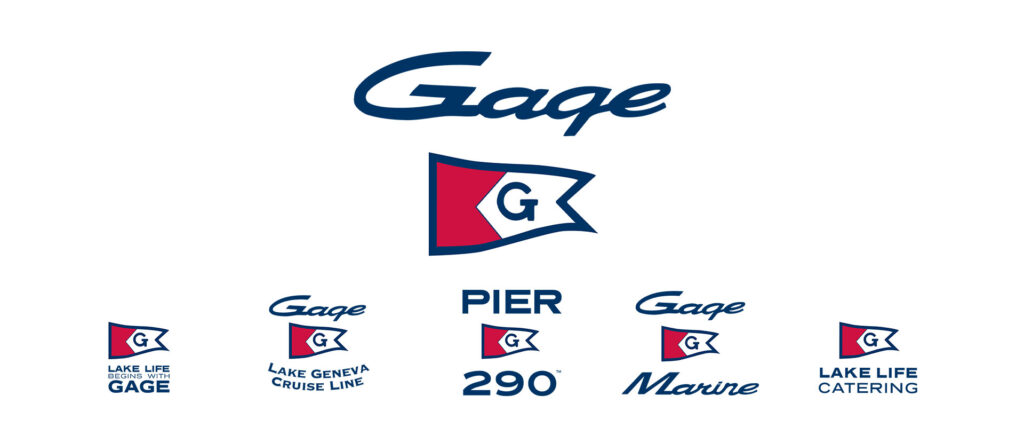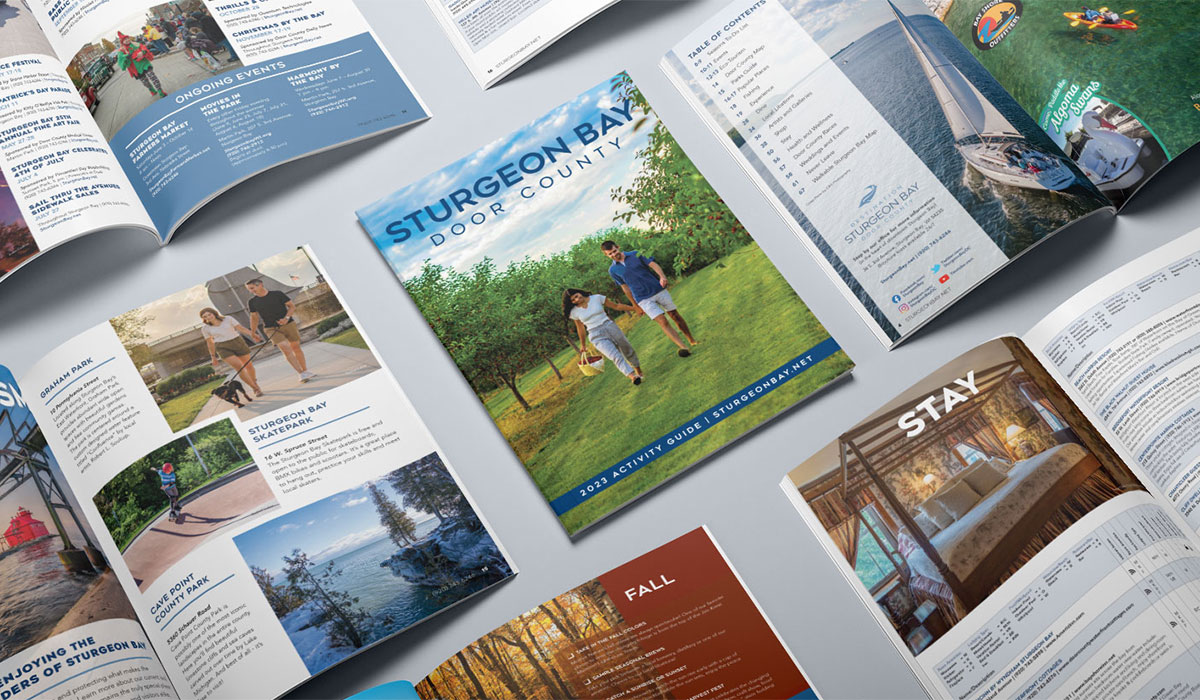A tree nursery. A cruise line. A regional tourism destination. What in the world do these all have in common? The answer is simple: branding.
Every company has a brand, but no two brands are the same. After all, every business/organization possesses a unique culture, audience, experience, and set of values.
At Signalfire, we interact with a diverse range of small businesses, travel/tourism organizations, and nonprofits on a daily basis, and we’ve found that nearly everyone has a question or two on the topic of branding
There are also some common misconceptions about what branding is, its overall value, and when it’s time to start thinking about it. To help clear things up, we put together a handy, strategic branding guide.
Are you ready to develop a brand that’s as awesome and distinct as you are? Let’s start with the basics.
What is a Brand & What is Branding?
The rough concept of a “brand” has been around for hundreds of years, but its purpose hasn’t changed much. A brand communicates three critical things: ownership, quality, and inspiration.
Most people we have conversations with assume a brand only consists of a few elements such as colors, fonts, a logo, and a slogan. But there’s so much more involved, including consumer perception, company values, voice, personality, and mission.
Your brand is, in short, your business’s or organization’s whole identity.
A corporate identity is everything a company does, owns, and produces while reflecting the values and goals of its business.
Implementing this central idea on a consistent basis builds and drives your company forward. It helps you express your belief system and your desire to serve your audience.
“Branding,” then, is the visual system that allows your audience to understand and experience your brand across all potential touchpoints. It’s how you choose to communicate the essence of your business to the world.
Take a look at the American flag or a jersey from your favorite sports team. You may just be staring at fabric embroidered with stars and stripes or names and numbers…but these things mean something to you.
Seeing the flag, or your team’s logo on your favorite hat, evokes a sense of pride and community, right?
It’s called consumer perception, and it’s a key aspect of branding.
3 Common Types of Branding
Anytime you embark on a branding journey, it’s wise to first determine your end goal. The truth is, there are several reasons you may want to focus (or refocus) your brand, and depending on your situation, you’ll want to approach it differently.
Most businesses and organizations we’ve worked with have fallen under one of these main categories:
- A new business looking to create a one-of-a-kind visual style to tell their brand story
- A growing/evolving company needing to update their image in order to better position themselves moving forward
- A business or organization experiencing a significant change (either positive or negative) looking to reinvent themselves or drastically transform their audience perception
Each of these scenarios come with their own set of challenges, which vary from industry to industry and even one company to another. In short, every branding project is different.
The good news? We just so happen to love that sort of thing at Signalfire.
1) STRATEGIC BRAND DEVELOPMENT: STARTING FROM SCRATCH
“Your brand is what other people say about you when you’re not in the room.” – Jeff Bezos, CEO of Amazon – MAKE GRAPHIC
Brand Identity
As with every aspect of your marketing and advertising efforts, the best way to begin a brand journey is with planning and research.
For companies preparing for an upcoming launch, this is especially important because you’ll need to know exactly who your target market is and which of their needs you’ll be satisfying.
We urge you to take as much time as needed to focus your internal mission and your plan to fulfill that mission in the marketplace. It’s much more difficult and expensive to do this later, so it’s critical to get it right the first time.
Once your corporate identity is comfortably set in stone, you’ll be ready to dress it up with creative design.
Brand Strategy
For new businesses and organizations, just keep it simple. It’s unlikely that you have a massive budget to work with starting out, and you may not even need one.
Do some preliminary research as to the visual styles you like and dislike, but remember…just because you like it, doesn’t mean it fits your brand. Your visual system must match your brand’s personality, not necessarily yours.
That’s why it’s smart to trust your branding to a professional designer. Creatives can help you weed out concepts that either fit or don’t fit well. It’s all about honest communication.
Our expert creative team works alongside clients to get a solid vision of who they are and who they want to reach, in order to deliver award-winning results.
For Example, Turtle Creek Nursery
Turtle Creek Nursery is a trusted Midwest producer of high-quality, wholesale plant material with a mission to provide and promote natural beauty to landscapes across the U.S.
Based in Delavan, Wisconsin on a 200-acre family-owned/operated farm, Turtle Creek has built a strong reputation for providing beautifully grown ornamental, shade, and evergreen trees and shrubs.
Our task began with gaining an in-depth understanding of Turtle Creek’s operations and industry to come up with a creative, functional design that would successfully set them apart.
After hosting a creative kickoff meeting and taking diligent notes on their brand identity, Signalfire’s creative team did extensive research on tree nurseries across the United States to ensure our designs would be truly unique.
We based the overall look and feel of the new logo to match Turtle Creek Nursery’s brand with an emphasis on…
- Quality
- Natural Beauty
- Long-Term Relationship Building
After several rounds of presenting concepts, collecting feedback, and making revisions, our talented graphic designers produced a stunning, new logo.

2) BRANDING AND LOGO REFRESHMENT: EVOLVING YOUR BUSINESS
“Design is not just what it looks like and feels like. Design is how it works.” – Steve Jobs, Co-founder of Apple – MAKE GRAPHIC
Brand Identity
Change is a constant in the world of business. Customers change. The economy changes. Technology changes. The same goes for your brand and your visual branding.
No matter how good your branding or logo is, one day it will be outdated. It can also be tough to let go. After all, it’s natural to become nostalgic about your very first logo. It’s like your first car.
But like your first vehicle, you have to trade it in for a newer model eventually. For your business, this is often a result of record growth, new products/service offerings, or changes in your audience.
Whatever the reason for refreshing your brand, our best advice is to start with a cozy base layer of strategic research.
Brand Strategy
When it comes to branding, your most reliable resource for feedback is always your loyal customers. Ask yourselves:
- Who are they?
- What do they care about?
- Which of their needs are we meeting?
- Why do they love us?
This is super important – these are people who already buy what you’re selling. They know who you are, and why they buy from you rather than your competitors. That makes their opinions ultra-valuable.
Consult a few of your most loyal audience members on the direction you’d like to head, and see if it resonates. If not, you’re probably headed in the wrong direction. The best brands know their audience inside and out.
For growing businesses and organizations, it’s critical to position yourself for future growth when the time is right. That often means a branding or logo update.
For Example, Gage Marine
Gage Marine Corporation is a family-owned enterprise that encompasses three iconic businesses that operate in and around Lake Geneva, Wisconsin. The Gage businesses can trace their Geneva Lake operations back to the mid-1800’s. Today, the Gage Marine Corporation family of businesses includes three key businesses: Lake Geneva Cruise Line, Gage Marine, and PIER 290.
One key to creating a marketing plan for your business is to understand what you’re doing currently. Signalfire offers our clients an outsider’s view through our Brand MAP (Marketing Assessment and Plan) process. During this deep dive, we look at the what, where, when, why and how of a business’ current marketing efforts and provide feedback and insight on areas of success and opportunities for improvement.
Signalfire created an extensive brand usage guide for each business. Read how we had an incredible impact for all three business units.

3) COMPLETE REBRAND: GET BACK TO WHAT MAKES YOU GREAT
“If people believe they share values with a company, they will stay loyal to the brand.” – Howard Schultz, Executive Chairman of Starbucks – MAKE GRAPHIC
Brand Identity
A total rebranding project is sometimes preceded by a business or organization neglecting their brand or straying from what makes their products/services great. This leads to customer dissatisfaction and revenue loss, but this isn’t always the case.
A complete rebrand may also be necessary when a significant change occurs within an organization. This might come in a variety of forms, such as a corporate buyout, a company-wide restructure, or new government regulations being passed.
These things aren’t uncommon to encounter in the business world, and companies have to adapt to account for changing consumer behavior and competitive landscapes.
What happens when your business/organization’s mission changes? It’s time for rebranding.
Brand Strategy
Research, research, research. We can’t stress it enough. Especially when taking on a rebranding project. It’s vital that you focus your audience – possibly identifying a new one, depending the situation.
Once you get your audience and your corporate identity nailed down, you can begin considering a new, innovative visual style that enables you to express your changes to your audience.
Then, it’s time to bring in a creative agency…like Signalfire, of course.
For Example, Destination Sturgeon Bay
Sturgeon Bay, Wisconsin is nestled between Lake Michigan and Green Bay and is the largest city in one of the Midwest’s hottest tourism spots—Door County. While Sturgeon Bay has one of the few shipbuilding waterfronts in the Midwest, it still supports a bustling tourism scene. Three distinct shopping districts, local lighthouses, and a thriving food culture make Sturgeon Bay an incredible year-round destination.

Signalfire’s strategic brand support and graphic design services go even further. When the community of Sturgeon Bay selected a new visual brand, Signalfire was tasked with carrying the design beyond wayfinding and into the rest of the event and marketing collateral.

Click to read the full case study on Sturgeon Bay.
Why It’s Important to Know the Difference
Alright…so why is all of this important? The truth is, your brand is your most valuable asset, and branding is the most effective way to build a strong customer/donor base over a long period of time.
KEEP YOUR BRAND EQUITY
This refers to the value of your brand, in terms of brand awareness, loyalty, and perceived quality.
Being authentic and true to your mission is essential to building equity because your audience knows when your brand is pretending to be something it’s not.
Studies show that 94% of consumers say they are likely to be loyal to a brand that offers complete transparency.
Just as we’ve described in the scenarios above, defining your audience and understanding what makes them tick will help you fashion a corporate identity that kicks as much butt as you do, while building some serious brand equity.
AVOID COSTLY MISTAKES
Loyalty and trust are powerful forces for your bottom-line…and a few mistakes can cost you big.
For those of you who remember “New Coke,” this is the perfect example. With Pepsi gaining market share, Coca-Cola execs decided to replace their very popular, classic soft drink for a new formula that was intended to mimic Pepsi’s.
This not only caused confusion, but insulted Coke’s loyal customers by communicating that they no longer valued their loyalty. This was a breach of trust that took years to rebuild.
The moral of the story? Consult your customers on major changes, and don’t forget where you came from.
ENSURE CONSISTENT BRAND EXPERIENCES
Branding is both how you present yourself and how others perceive you, and your audience experiences your brand through a series of interactions.
Loyal customers become accustomed to seeing your logo and branding the way it is, and a completely new look could lead to questions about your product.
For example, look no further than the effects a rebranding project had on Tropicana in 2009. The company lost nearly 50 million dollars because they changed too much, too quickly and failed to inform their loyal buyers.
Before you decide on a major branding change, make sure your customers are ready for it.
Where to Start? A Business M.A.P. (Marketing Assessment & Plan)
If you’re in need of branding help, hiring a creative agency can be extremely beneficial. At Signalfire, we welcome the challenge of assisting your business or organization with creative branding to help fuel your success.
To determine if your branding is in-line with your brand, it’s important to spend time evaluating who you are as a company, why you do business, and who you are speaking and selling to. That’s why we recommend a Business MAP.
We’ve accomplished this for many of our clients and would love to sit down with you to discuss how we can help guide your brand and outfit you with a brand, new look this year.
Want to get in touch? Request a quote today, or call us with a question at 262-725-4500.